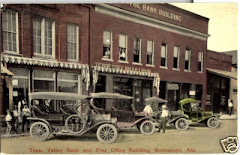When and how long had the Tennessee Valley Authority's, TVA, Browns Ferry been experiencing degraded conditions as a result of failed valves? Was there an intentional cover-up by the TVA and the Nuclear Regulatory Commission, NRC? Do nuclear Peer Review organizations such as WANO, World Association of Nuclear Operators, or INPO, Institute of Nuclear Power Operations, have a moral, ethical and legal responsibility to disclose the existence of serious issues which may jeopardize public health and welfare of the public relating to nuclear power operations?
UNITED STATES OF AMERICA
U.S. NUCLEAR REGULATORY COMMISSION (NRC)
BRIEFING ON BROWNS FERRY UNIT 1
OCTOBER 18, 2011
9:O0 A.M.
TRANSCRIPT OF PROCEEDINGS
Public Meeting
All the players were present, the NRC Commissioners and TVA Senior Executives. Quote from page 1 of the report -
"CHAIRMAN JACZKO: Good morning, everyone. The Commission meets today to discuss the safety challenges experienced by the Browns Ferry Nuclear Power Plant and the steps being taken to strengthen safety at the plant. In particular, in May 2004, Brown's Ferry Unit 1 was placed in Column IV of the Reactor Oversight Process Action Matrix after it received a "Red" finding when a reactor core cooling valve failed." Is that an error?
In the next paragraph Commissioner Jaczko goes on to say:
"This is not the only significant issue the Browns Ferry plant has experienced in recent years. In 2003, all units at Browns Ferry were placed in Column III after receiving a "Yellow" finding for fire protection issues. Given this recent history of issues, I'm sure that we can all agree that we want to see the plant perform more safely. To achieve that, there needs to be a strong commitment from the licensee’s entire organization, from its senior leadership to its frontline engineers to do what needs to be done for safety."
Had the plant actually received "Red finding" in 2004, or was this an error on the part of the NRC Chairman, Commissioner Jaczko? Attention to detail is important for the nuclear industry. The report continues; BILL BORCHARDT's comments on page 4 of the PDF linked: "...Browns Ferry Unit 1 entered Column IV of the Action Matrix in the fourth quarter of 2010." VICTOR MCCREE's comments on page 5: "...Unit 1 was assessed as being in the multiple repetitive degraded cornerstone, or Column IV, of the Reactor Oversight Process Action Matrix. Unit 1 was placed in this cornerstone column due to a "Red" finding in the mitigating systems cornerstone...On October 23rd, 2010, operators of Browns Ferry Unit 1 attempted to place Loop II of the residual heat removal low pressure coolant injection, or, RHR LPCI system in service to support refueling activities."
Maybe Commissioner Jaczko misspoke about the 2004 "Red Finding. Meanwhile, according to the NRC, the "Red Finding" is lifted and Browns Ferry Unit 1 is returned to the "Green" operating column stating, "The results of the inspection indicated that Browns Ferry was being operated safely." NUCPRO's listing of the Browns Ferry Assessment Letter: March 10, 2014 http://www.nucpros.com/content/browns-ferry-annual-assessment-letter
When did TVA and the NRC know there were valve problems at Browns Ferry?
Nuclear facilities have the privilege of receiving Peer Review Inspections by two separate groups of nuclear engineers. One of the groups is WANO, World Association of Nuclear Operators. Another group is INPO, Institute of Nuclear Power Operations. Unfortunately for the public, when the INPO or WANO reports are issued they have a statement that they are restricted from public view. The TVA claims that the public is not entitled to see the reports nor entitled to a copy of the report for proprietary and financial reasons. TVA's position is highly suspect and reflective of TVA's attempt to continue with cover-ups and secrecy involving its nuclear program failures. However, the WANO and INPO groups themselves mark the reports as restricted.
The restrictive markings, when covering up serious safety issues which reflect negligent actions on the part of management of nuclear power plants, are effectively covering up issues which are of grave public concern. In the case of the Browns Ferry GE Mark 1 Nuclear plants the issues covered up, if not corrected, place the public at a higher risk of physical injury as a result of TVA negligence and a failure to correct the negligent actions by the regulator, the NRC.
The WANO and INPO reports contain information that should be and must be made public. There is an ethical, moral and legal responsibility of the government agencies and the professional nuclear engineering organizations to make public those defective items identified which may in fact cause a catastrophic failure thus endangering the public. Such is the case of multiple defective valves which insure a nuclear reactor is cooled properly in the course of normal operations and emergency events.
The reports contain information regarding the safety of operating nuclear reactors. In the case of the Browns Ferry Nuclear Facility the INPO report dated July 2010 indicates the TVA, and presumably the NRC knew of the repetitive valve failures at all of the 3 Browns Ferry Units going back to 2006. On pages 30 and 31 (of 83pages) all 3 Browns Ferry Units experienced various valve failures.
The following photo of the pages are hereby listed as news, criticism and educational use, this posting is a not for profit listing under the Fair Use Rule of Section 107 of United States Law.
This listing also casts grave doubt on the inappropriate classification of such documents and the Federal Government's and the INPO/WANO institutions responsibilities to divulge such information to the public. The INPO report discloses long time safety failures at Browns Ferry and brings to light the regulators failure, NRC, as well as the TVA's failure as to safety culture and executive management. This failure extends to the NRC having access to such reports and keeping the reports restricted. The restriction of the reports are immoral, unethical, and possibly illegal, as they disclose serious public safety hazards regarding nuclear reactors at the TVA Browns Ferry nuclear facility.
Nuclear Power Plant Safety and the protection of the publics health and welfare should be a TEAM PROCESS to protect the public. Not a process of cover-ups and secret documents to protect the nuclear power industry, executives, defective systems and incompetent managers.
The INPO report began its description as Follows for the defective valves at Browns Ferry on page 28: "High and Low Pressure Injection systems have experienced repeat and age related failures." It goes on to describe management failures and "insufficient actions to prevent reoccurrence of equipment failures." The exact findings are hereby submitted as a "Fair Use Right" for the purpose of news reporting, education, criticism and the exposure of systemic negligence in a safety culture involving nuclear power use by the TVA.
Click on images for an expanded view.
Due to the seriousness of the issues involved and the appearance of a cover-up and or negligent activities on the part of the NRC and the TVA in this matter, the INPO report relating to valve failures at the TVA Browns Ferry GE Mark 1 Nuclear Facility is disclosed.
The July 2010 INPO report goes on to describe other equipment failures as a result of a failed safety culture and management neglect.
Nuclear Engineer Henry Jones discusses the existence of Peer Review Reports and their implications.

















No comments:
Post a Comment